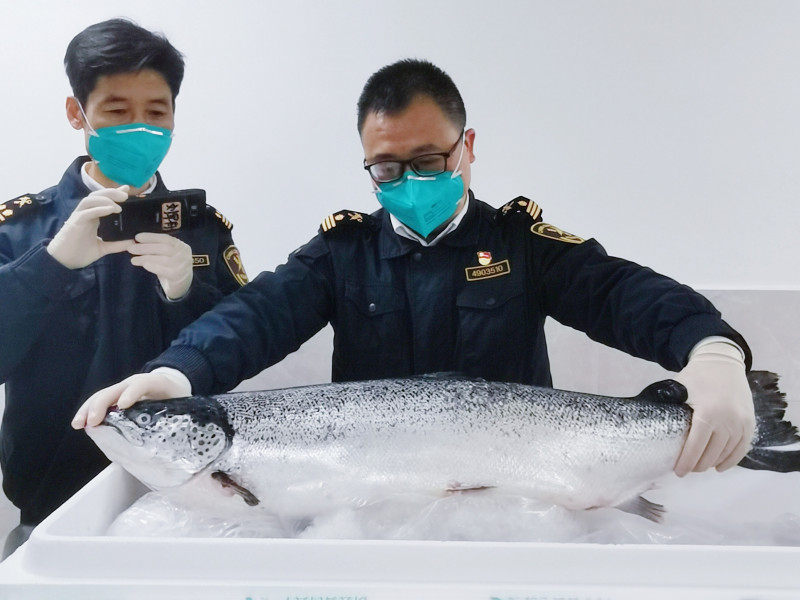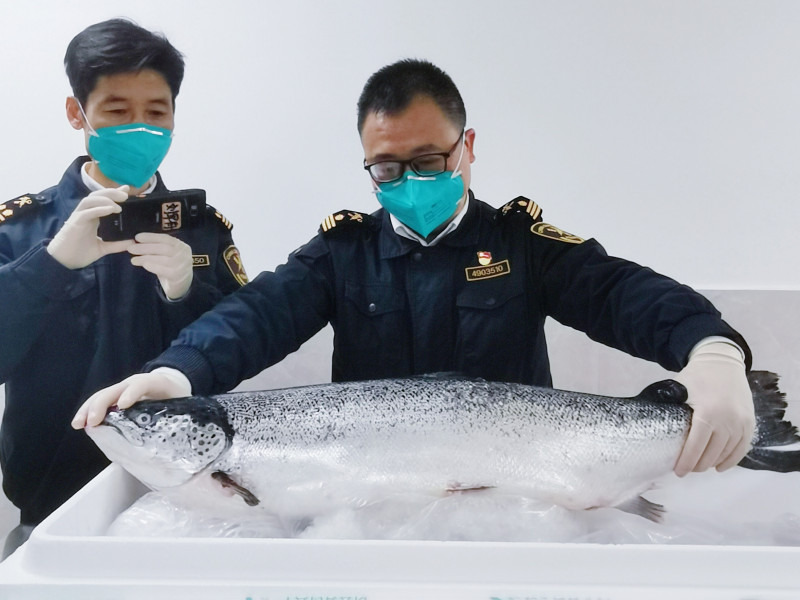New fresh products arrive at Changsha airport
On March 19, it was reported by Changsha Customs that, following the arrivals of fresh lotus fruit from Thailand, fresh plums from Chile, and fresh red groupers from the Philippines, the fresh lineup at Changsha Huanghua International Airport welcomed a new addition: fresh salmon from Chile.
Salmon is popular among consumers due to its rich protein content, abundance of essential micronutrients and delicious taste.

The first batch of salmon, totaling three tons, arrived at Changsha Huanghua Airport via a Boeing 777 cargo plane. The plane flew over three continents, departing from Santiago, the capital of Chile, making a stopover in Addis Ababa, the capital of Ethiopia in Africa, and flying approximately 18,000 kilometers before finally arriving in Changsha. This is the first time that Changsha airport has imported fresh salmon from Chile.
Since the beginning of this year, the importation of fresh produce at Changsha airport has become increasingly popular, with many new arrivals.
On March 16, 2.8 tons of Thai lotus fruit arrived in Changsha on the inaugural international cargo flight from Thailand. This was the first time that this type of fruit had been imported to Hunan airport.
On February 24, a cargo flight carrying 42 tons of Chilean grapes and plums arrived at Changsha Huanghua International Airport. This was the first time that Chilean grapes and plums had been imported to Changsha Airport, and also the first time that fresh fruit had been imported directly to Hunan this year.
On February 16, a batch of fresh-frozen red groupers from the Philippines arrived at Changsha Huanghua International Airport on a flight. This was the first time that frozen seafood products from the Philippines had been imported to the airport.
On February 14, the Changsha International Trade Group, a state-owned foreign trade platform supported by the Hunan Free Trade Zone, welcomed the first batch of 15 tons of Canadian Boston lobsters for the new year.
According to customs statistics, Changsha imported seafood products worth 480 million yuan in the first two months of this year, an increase of 19.3 percent. Freshly imported seafood and fruit arrive in Changsha continuously by plane, with abundant quantity and variety, greatly enriching the citizens’ basket of vegetables and fruit, and satisfying people’s longing for a better life.
The continuous expansion of seafood and fruit imports is inseparable from the recovery and addition of international routes and the resurgence of consumption.
Currently, Changsha airport has six regular international cargo routes. In the first two months of this year, it handled a total of 264 inbound and outbound flights, a year-on-year increase of 66 percent.
Fresh fruit and seafood imports have very high time requirements. To ensure the fast clearance of this batch of Chilean salmon, Changsha Customs communicated in advance with the import enterprises to understand their import needs and plans, and provided guidance to the enterprises to quickly obtain the import quarantine certificate and prepare for entry supervision in advance. After the flight landed, Changsha Huanghua Airport Customs inspection officers carried out on-site quarantine inspections in a timely manner, greatly reducing clearance time.
In recent years, Changsha airport customs has actively guided the Changsha Huanghua Comprehensive Bonded Zone to rely on airport ports to designate supervision sites for imported fruits and fresh frozen seafood products, and has expanded the import of relevant goods by air using the “zone-port linkage” operating model.
For imported fresh products such as fruit and seafood, Changsha airport customs has established a “Fresh Products Clearance” studio, opened a “green channel”, and implemented measures such as “7x24” hour appointment declaration and inspection to ensure that inspections can be conducted immediately upon arrival.
In addition, new inspection models such as exemption from on-site inspection for import and export consignees, and warehouse inspection have been implemented in the inspection process. The progress of inspection of key and emergency goods is dynamically tracked to ensure timely clearance.

 Print
Print


